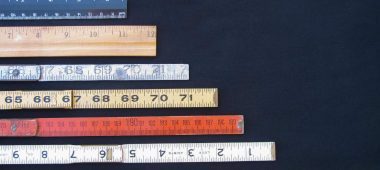Ray Dalio, who runs one of the world’s largest hedge funds, is also one of the smartest people in the room when it comes to economic thought rooted in learnings from history. If you have a few minutes, I’d highly encourage you to watch the Bridgewater founder’s recent TED presentation, where he makes a compelling case that we have the textbook conditions for a depression. In fact, Dalio says he believes the U.S. economy will likely enter a depression, with recovery years away.
While we are all working hard to social distance and keep our families safe, do we really need to bring up the D-word? While we can hope for this not to be the case, we won’t simply wake up one day and everything “will be back to normal.” Businesses will be exiting from a COVID-19 health crisis into a deep recession, or worse.
Of course there are still a lot of unknowns, particularly around how quickly we can contain the virus and how quickly the world’s economies will recover. But knowing what the future could look like will help us more effectively set business strategy for getting to the other side and beyond. My team and I have been giving a lot of thought to the true reality of the economy because the optimal business strategy depends on the economic environment we are operating in.
Let’s look at the facts we have about the severity of today’s reality:
- Economy: Driving down the street, we definitely can see the economy is hurting – the big question is how much pain will there be? Economic estimates range from 25% to 50% annualized declines, with JP Morgan estimating a 40% drop. Remember, that 70% of our economy is driven by consumer spending, so the psychology of fear and layoffs contributes to people hunkering down and spending less even if they keep their jobs, which further depresses economic output. Consumer sentiment has fallen the most on record.
- Unemployment: With over 20 million new unemployment claims filed in the past four weeks (more than 10x greater than any week in history), the current unemployment rate is mathematically estimated to be 16+% as of April 11. For reference, at its absolute peak, unemployment in the Great Recession briefly hit 10%. Some Federal Reserve economists have been projecting the unemployment rate will reach up to 32%. This would be 1.5 times the worst levels of the Great Depression.
- Bounce-back: It’s important to realize that we are not going to exit in a few weeks or months with the virus gone or contained to a manageable level, with the risk of having to go back down into lock-downs. In this environment of uncertainty, it’s unlikely that companies will be rushing out to rehire most of the people they terminated. Bain just released a report stating, “based on our analysis, two months of heavy mitigation could result in the US permanently losing up to one-quarter of all business establishments.” A significant portion of the above unemployment figures will be associated with the large number of businesses that will go under, so those jobs will not be coming back. Despite the unprecedented expansion in the Federal Reserve’s scope, it seems ill equipped to jumpstart the non-publicly traded Main Street businesses, which employ 2 out of 3 Americans.
- Florida-specific perspective: While we don’t yet have region-specific data, it is highly likely that Florida is much worse than these averages because of our dependence on tourism, travel, and trade. A Brookings Institute report predicts Florida will be the worst hit state economically in the nation.
What do we do with all this information? We can strive to conserve cash and make the necessary adjustments in business strategy to be a survivor. We may even thrive.
Dalio believes the companies that will survive and thrive will be the basic “meat and potato” businesses with low debt levels, as well as the agile innovators with strong balance sheets. Many of America’s iconic companies were founded during downturns: GE, Disney, FedEx, CNN and Microsoft among them. The Great Recession spawned WhatsApp, Venmo, Uber and others.
Other firms made pivots during downturns that changed their ultimate trajectories. Just as Procter & Gamble saw an opening to bet big on soap sales during the Great Depression – we all need soap — what all these companies saw was an opportunity.
In crisis, there is always opportunity. All industries will likely experience a “New Normal,” yet many competitors will fail to accept it and adapt. This provides an excellent opportunity for current businesses and new entrepreneurs to aggressively grow and purchase assets more affordably.
In future articles, we will dive into what companies should be doing now to survive – and prepare to thrive.













